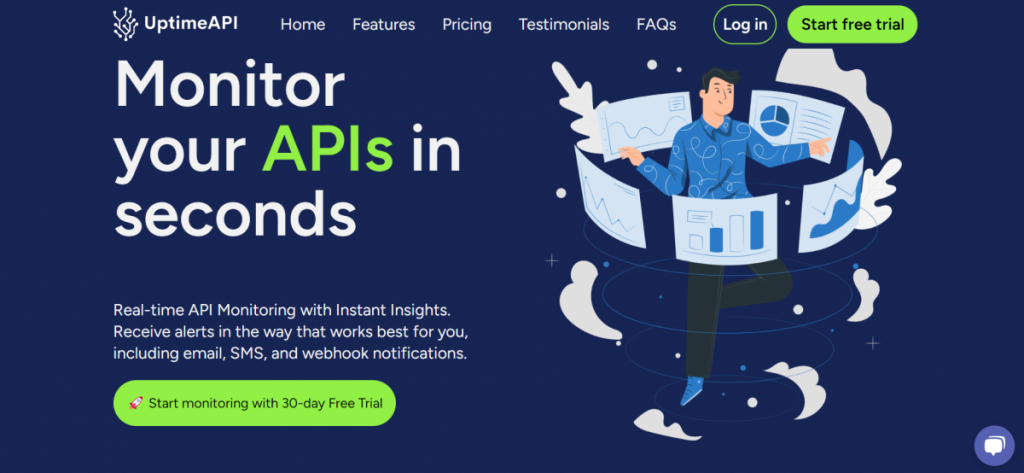In the intricate web of modern technology, the performance of APIs (Application Programming Interfaces) plays a pivotal role in ensuring a seamless digital experience. The efficiency with which APIs respond to requests can make or break user satisfaction. In this article, we delve into the world of API performance monitoring, shedding light on its importance, metrics, and best practices. Also, we will show you which is the best service for API Monitoring.
Understanding API Performance Metrics
Response Time and Latency
Response time and latency are key indicators of API performance. It measures the time taken for an API to reply to a request, while latency reflects the delay in data transmission. Minimizing these metrics is vital for enhancing user experiences.
Throughput and Error Rates
Throughput measures the number of requests an API can handle within a specified timeframe. Lower error rates signify the reliability of an API. Monitoring these metrics helps ensure consistent service delivery.
Resource Utilization and Scalability
Efficient resource utilization is critical for API performance. Monitoring CPU, memory, and network usage aids in optimizing resource allocation. Scalability metrics indicate the ability to handle increasing loads.
The Significance of Real-time Monitoring
Instant Issue Detection and Resolution
Real-time monitoring enables the immediate identification of performance issues. Timely alerts and notifications allow for swift resolution, minimizing downtime and user impact.
Minimizing Downtime and User Impact
Downtime can be costly, both in terms of revenue loss and reputation damage. Real-time monitoring ensures that issues are addressed proactively, reducing the risk of service disruptions.
Proactive Capacity Planning
Real-time data provides insights into traffic patterns and resource utilization. This data informs proactive capacity planning, allowing organizations to scale resources as needed to maintain optimal performance.
Use Uptime API: To Check API Performance
If you are looking to monitor APIs, Uptime API is the definitive solution. It is a cloud-based API monitoring service that helps businesses ensure the uptime and performance of their APIs. It monitors all aspects of API performance, including availability, response times, and functionality. This allows businesses to identify and resolve problems quickly before they impact users. Also, the tool has monitoring servers located around the world, so businesses can monitor their APIs from anywhere. This is especially important for businesses with global users.
Uptime API works by sending synthetic requests to your APIs at regular intervals. It then monitors the responses to these requests to determine if the APIs are available and performing as expected. It can also monitor the functionality of your APIs by sending requests with specific data and validating the responses. Businesses will increase revenue by reducing downtime and improving the user experience.
You just have to register on the Uptime API website and start monitoring with a 30-day Free Trial. Then create a new “Monitor” and complete the required data: API’s name, URL, HTTP Method, Monitor Timeout, Monitor Interval, etc. Finally, the service will monitor your API by regularly checking the status to ensure they are up and running as expected.
Watch this video:
API performance monitoring is a critical aspect of maintaining a seamless digital experience. Understanding the intricate web of performance metrics, adopting real-time monitoring, and implementing best practices are essential steps toward ensuring API performance meets user expectations. Visit the Uptime API website for more information.
Read this post: All You Need To Know About The Whatsapp Phone Number Verification API




